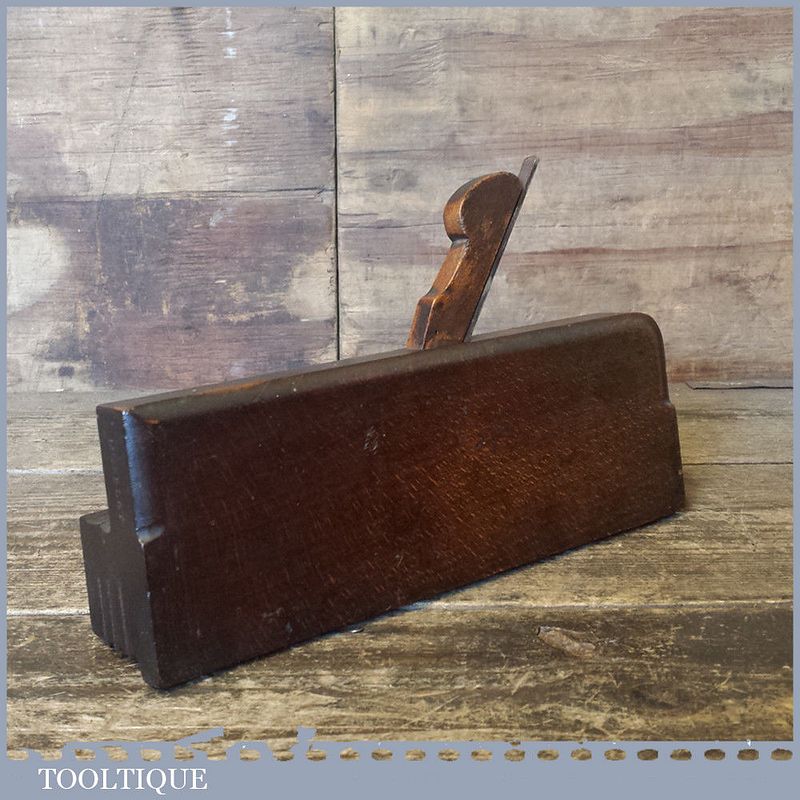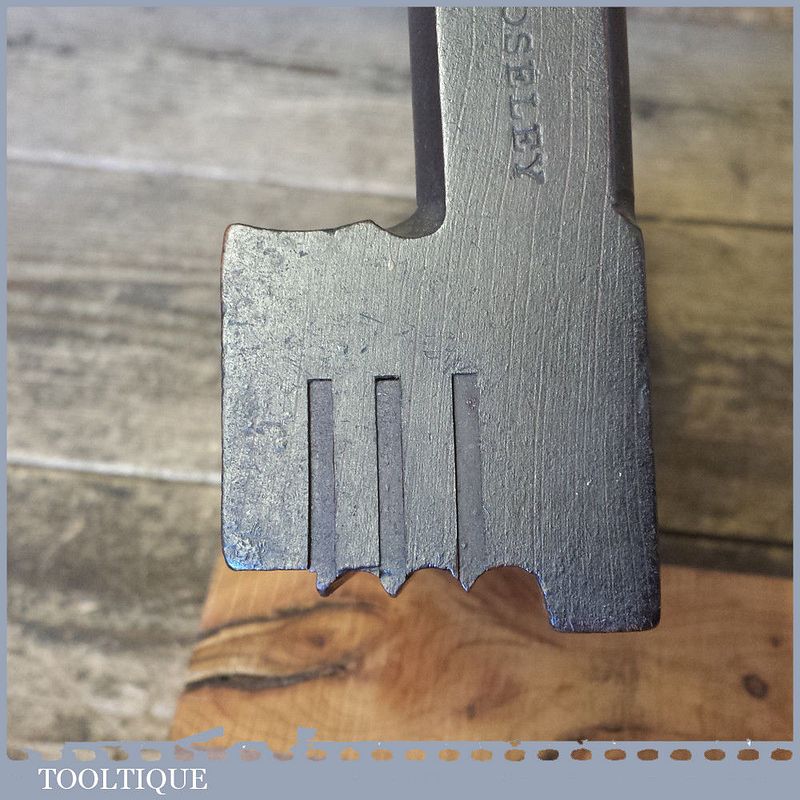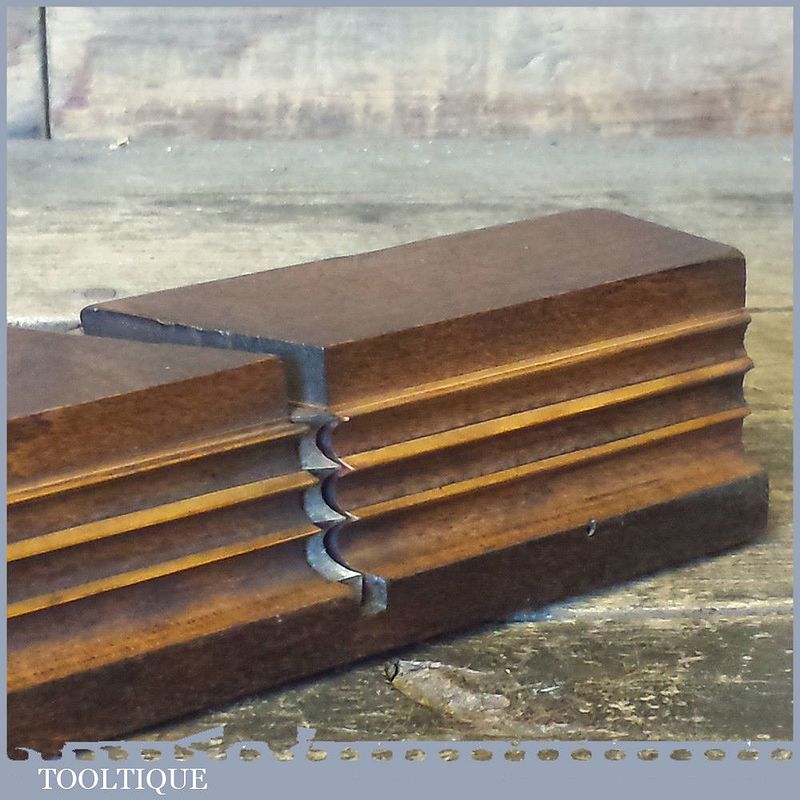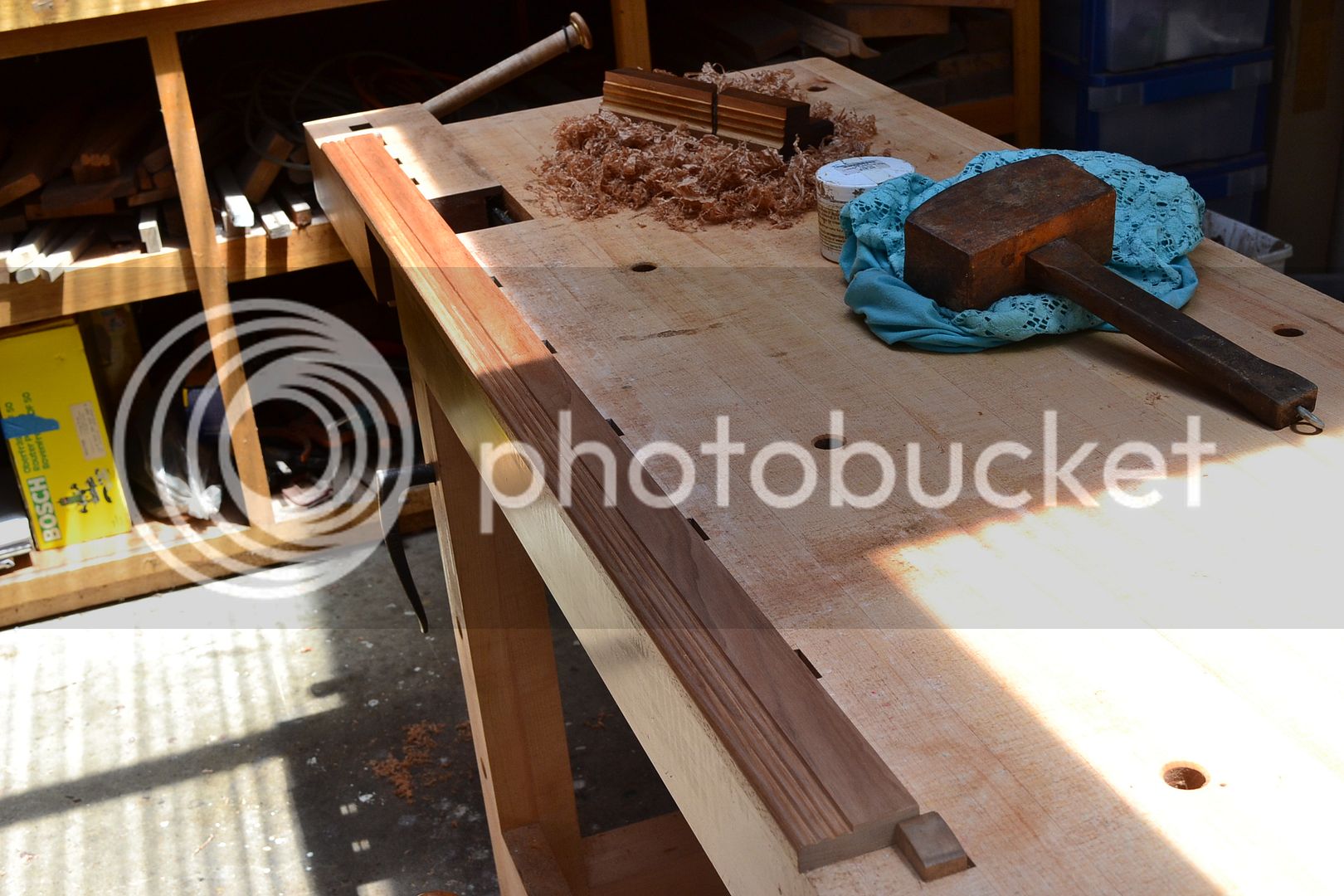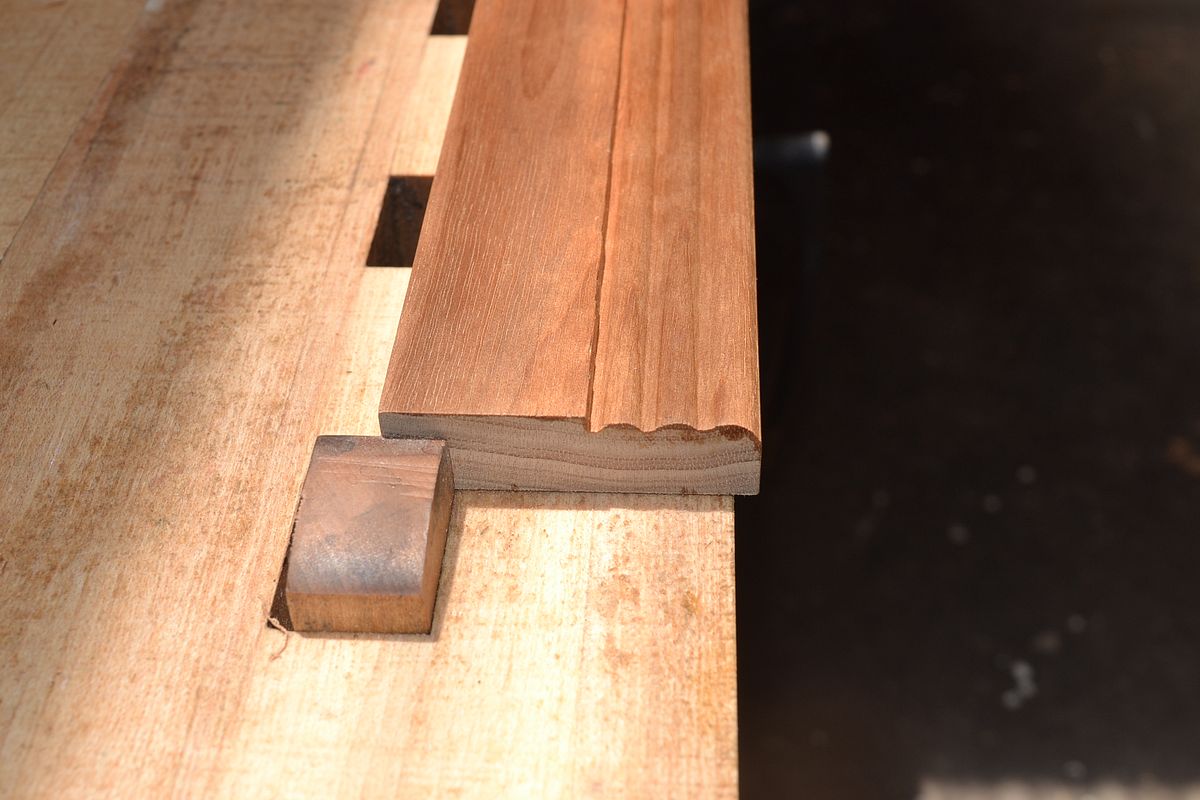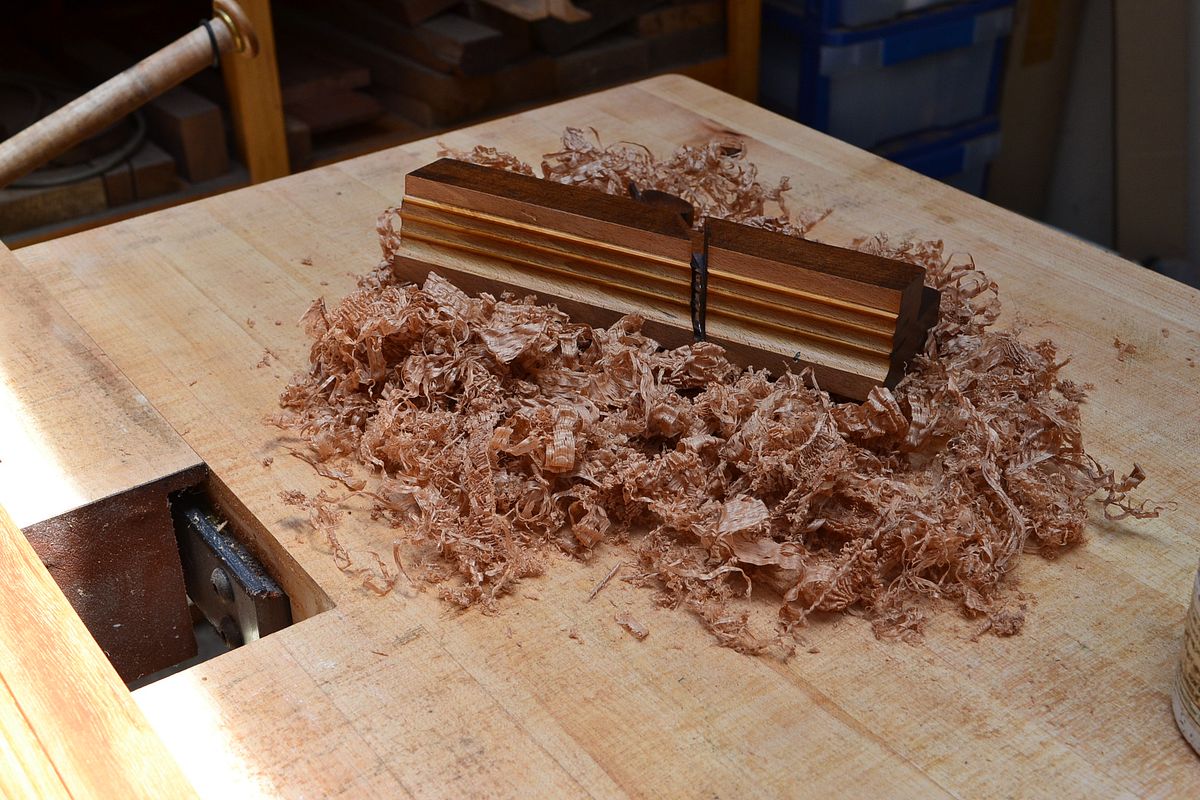You are using an out of date browser. It may not display this or other websites correctly.
You should upgrade or use an alternative browser.
You should upgrade or use an alternative browser.
MOSELEY Moulding Plane
- Thread starter swagman
- Start date

Help Support UKworkshop.co.uk:
This site may earn a commission from merchant affiliate
links, including eBay, Amazon, and others.
Trevanion
Greatest Of All Time
Moseley was more likely the user of the plane than the maker. I think in the late 1800s to early 1900s your tools had to be stamped with your name to be insured against theft. I’m sure someone will correct me if I’m wrong though.
swagman
Established Member
Trevanion":1qzsumxx said:Moseley was more likely the user of the plane than the maker. I think in the late 1800s to early 1900s your tools had to be stamped with your name to be insured against theft. I’m sure someone will correct me if I’m wrong though.
Appreciate the feedback. MOSELEY was more than likely the plane maker.
The question is was it John MOSELEY, and if so, does the makers stamp suggest it predates (& Son) !!!
https://londonstreetviews.wordpress.com ... ol-makers/
Stewie;
The best researched source of information on this sort of question is still British Planemakers from 1700, third edition.
Over six pages, it describes Moseley as the pre-eminent London planemaker of the 19th century. It also attempts to sort out the marks most likely to have been used in different periods of the firm's history.
For the name MOSELEY on its own, it suggests the period 1809-1818, before it became Moseley & Son.
It's a long, complicated story with the firm trading from various addresses as wholesalers and retailers, but it does confirm an early date for your plane.
It's also worth mentioning that in 1892 the business and trademark of John Moseley & Son was bought up by Marples who moved plane production from London to Sheffield by 1904. Until at least 1938 they offered their range of wooden planes with the purchaser's choice of branding - you could choose Marples or Moseley.
This may sound odd, but there are plenty of current examples particularly in the car and white goods markets where the same model is branded differently in different markets.
The effect is that planes marked Moseley & Son are much more common than your early style.
Over six pages, it describes Moseley as the pre-eminent London planemaker of the 19th century. It also attempts to sort out the marks most likely to have been used in different periods of the firm's history.
For the name MOSELEY on its own, it suggests the period 1809-1818, before it became Moseley & Son.
It's a long, complicated story with the firm trading from various addresses as wholesalers and retailers, but it does confirm an early date for your plane.
It's also worth mentioning that in 1892 the business and trademark of John Moseley & Son was bought up by Marples who moved plane production from London to Sheffield by 1904. Until at least 1938 they offered their range of wooden planes with the purchaser's choice of branding - you could choose Marples or Moseley.
This may sound odd, but there are plenty of current examples particularly in the car and white goods markets where the same model is branded differently in different markets.
The effect is that planes marked Moseley & Son are much more common than your early style.
swagman
Established Member
AndyT":2g16pz0c said:The best researched source of information on this sort of question is still British Planemakers from 1700, third edition.
Over six pages, it describes Moseley as the pre-eminent London planemaker of the 19th century. It also attempts to sort out the marks most likely to have been used in different periods of the firm's history.
For the name MOSELEY on its own, it suggests the period 1809-1818, before it became Moseley & Son.
It's a long, complicated story with the firm trading from various addresses as wholesalers and retailers, but it does confirm an early date for your plane.
It's also worth mentioning that in 1892 the business and trademark of John Moseley & Son was bought up by Marples who moved plane production from London to Sheffield by 1904. Until at least 1938 they offered their range of wooden planes with the purchaser's choice of branding - you could choose Marples or Moseley.
This may sound odd, but there are plenty of current examples particularly in the car and white goods markets where the same model is branded differently in different markets.
The effect is that planes marked Moseley & Son are much more common than your early style.
Thanks Andy; appreciate the feedback.
regards Stewie.
StraightOffTheArk
Established Member
Looks to be a very nice plane - have you used it yet and, if so, do you have a photo of the result?
SOTA
SOTA
lurker
Le dullard de la commune
Trevanion":o83xkg2e said:Moseley was more likely the user of the plane than the maker.
I agree, it looks like an owner's mark like all the other woody planes we have here with the same thing.
If it was a makers mark it would be at least straight if not more embellished.
It's a nice plane whoever made it though.
Moseley was the maker. 100% certain.
The prime position for a mark is as here, on the toe, so if there's only one name and it's in that position, it's very likely to be the maker.
If the name is the name of a successful, famous maker, it's even more likely.
If the mark is of a form, size and typeface also found on many other planes, and recorded in the most carefully researched reference books, I think that's a clincher.
The prime position for a mark is as here, on the toe, so if there's only one name and it's in that position, it's very likely to be the maker.
If the name is the name of a successful, famous maker, it's even more likely.
If the mark is of a form, size and typeface also found on many other planes, and recorded in the most carefully researched reference books, I think that's a clincher.
Cheshirechappie
Established Member
I'm voting for Moseley being the maker, too - there are a lot of Moseley moulding planes about. They must have churned out thousands over the years of their existence.
John Whelan ('The Wooden Plane, It's History Form and Function') suggests that this form of plane is a 'multiple reed' rather than a 'bead and reed' (though to be fair, that's probably a difference without much of a distinction!). Quite unusual. In very good condition, too.
My suspicion (based on no evidence whatever) is that it was intended for architectural work. If Andy's dating is about right (and I have no reason to question it), that puts the plane in the Georgian era, before the rise of machinery and the standard mouldings produced on it that was available to later Victorian builders. The Georgian builders were still experimenting a bit with architectural embellishment, and there are still some beautiful and varied examples of interior joinery work from that era about. About the only joy in visiting my dentist is the chance to admire the door linings, skirtings and ceiling plasterwork in the late 1700s property they occupy. Don't recall seeing any multiple reeds - but then Cheshire is a fair way from London, and the plane probably didn't travel that far - until Stewie bought it, anyway!
John Whelan ('The Wooden Plane, It's History Form and Function') suggests that this form of plane is a 'multiple reed' rather than a 'bead and reed' (though to be fair, that's probably a difference without much of a distinction!). Quite unusual. In very good condition, too.
My suspicion (based on no evidence whatever) is that it was intended for architectural work. If Andy's dating is about right (and I have no reason to question it), that puts the plane in the Georgian era, before the rise of machinery and the standard mouldings produced on it that was available to later Victorian builders. The Georgian builders were still experimenting a bit with architectural embellishment, and there are still some beautiful and varied examples of interior joinery work from that era about. About the only joy in visiting my dentist is the chance to admire the door linings, skirtings and ceiling plasterwork in the late 1700s property they occupy. Don't recall seeing any multiple reeds - but then Cheshire is a fair way from London, and the plane probably didn't travel that far - until Stewie bought it, anyway!
swagman
Established Member
StraightOffTheArk":1e5xdiyf said:Looks to be a very nice plane - have you used it yet and, if so, do you have a photo of the result?
SOTA
The plane is currently in transit from the u.k to Au.
Stewie;
StraightOffTheArk
Established Member
swagmanThe plane is currently in transit from the u.k to Au. Stewie;[/quote said:Looking forward to hearing about it when it arrives in that case. In the meantime here's some photo's of mine. I got it in a joblot - unfortunately it's not in very good condition, but I've kept it because it's not good enough to sell singly but might come in handy, one day. As you can see, I've done nothing to it except treat for woodworm, but I might make it useable now. It's made by Higgs and dates, according to BPM 2nd Ed, to the late eighteenth century.
Tara a bit,
SOTA



Attachments
StraightOffTheArk
Established Member
Forgot to say, on mine the reeds are graduated in size with the biggest next to the fence, the difference is very small though - just interested to see whether this is common practise or not.
SOTA
SOTA
woodywoodwood
Established Member
I have a collection of Moseley planes, including one very similar to yours. Im interested to hear that the reeds vary in size - when I get home I will check mine. Does the collective intelligence of UKW think this is intentional?
StraightOffTheArk
Established Member
I think it is intentional on my Higgs as they are progressively smaller from the fence - whether they were like that when it was first made I don't know as there is a lot of wear and alterations, however the boxing follows the same pattern.
Tara a bit,
SOTA
Tara a bit,
SOTA
swagman
Established Member
The Moseley Triple Reed Plane arrived in the post 2 days ago.
The refurbishment is progressing well. The most difficult task was correcting a very slight bow within the alignment of reeded profiles.
#Fresh hide glue applied to the boxwood inserts.
#The soles reeded profile, depth stop, and guide fence reworked.
#The fit of the wedge and cutting iron have both been fettled in.
*Next on the to do list is to fine tune the shape the irons cutting profile, and sharpen.
Attached are photos that show some of the progress.
Stewie;

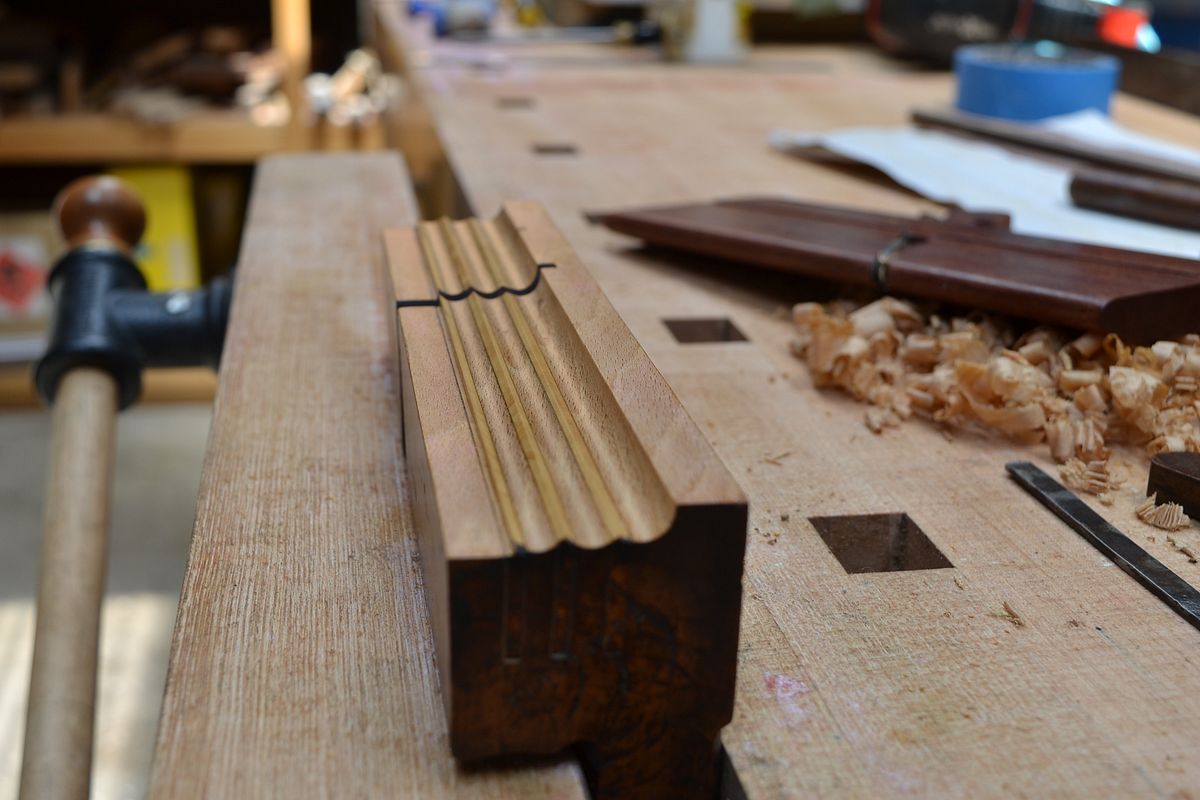
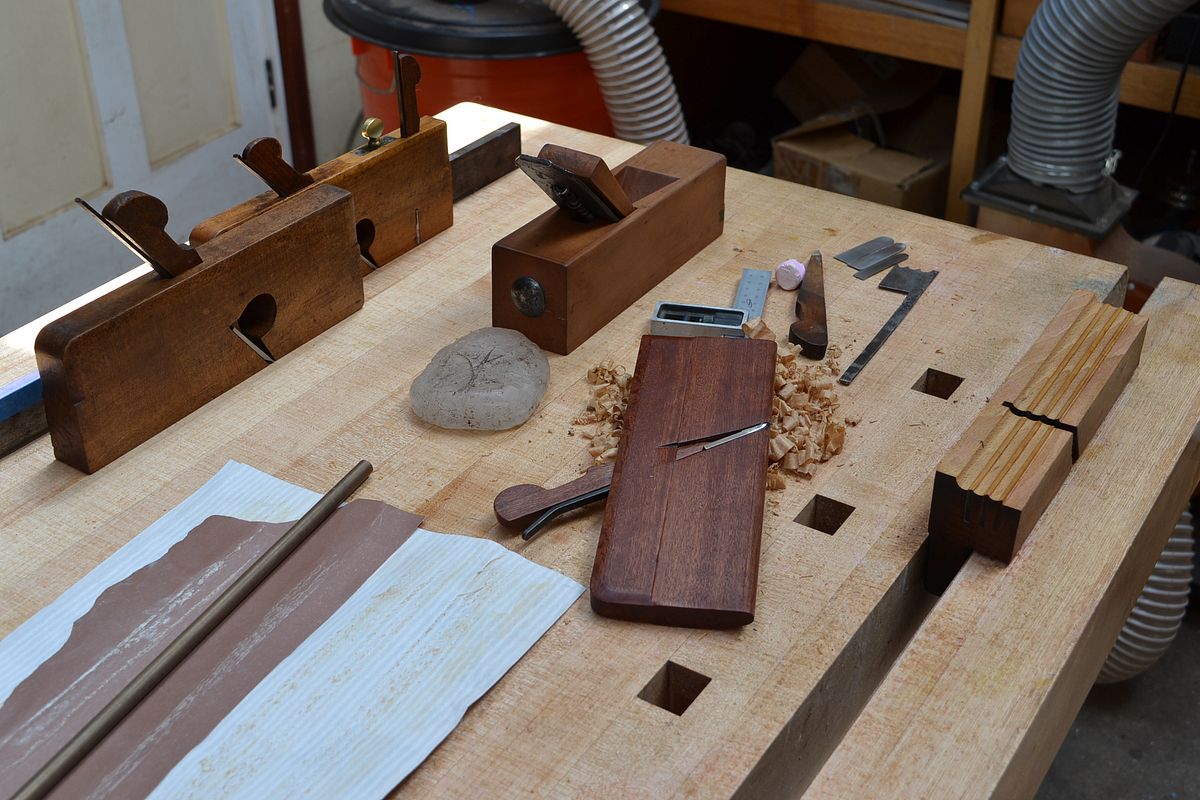
The refurbishment is progressing well. The most difficult task was correcting a very slight bow within the alignment of reeded profiles.
#Fresh hide glue applied to the boxwood inserts.
#The soles reeded profile, depth stop, and guide fence reworked.
#The fit of the wedge and cutting iron have both been fettled in.
*Next on the to do list is to fine tune the shape the irons cutting profile, and sharpen.
Attached are photos that show some of the progress.
Stewie;



swagman
Established Member
Nick; the old hide glue had crystallized with age and was allowing movement within the boxwood slips. It took little more than a few light taps with the hammer to remove each slip from its housing.
Stewie;
Stewie;
swagman
Established Member
The following shows the cutting iron after being shaped and sharpened to match the profile of the planes triple reed sole.
The plane was then tested for performance on some sample boards, and final fine tuning has been completed.
Photos showing the worked profiles will be included in the next post.
Stewie;
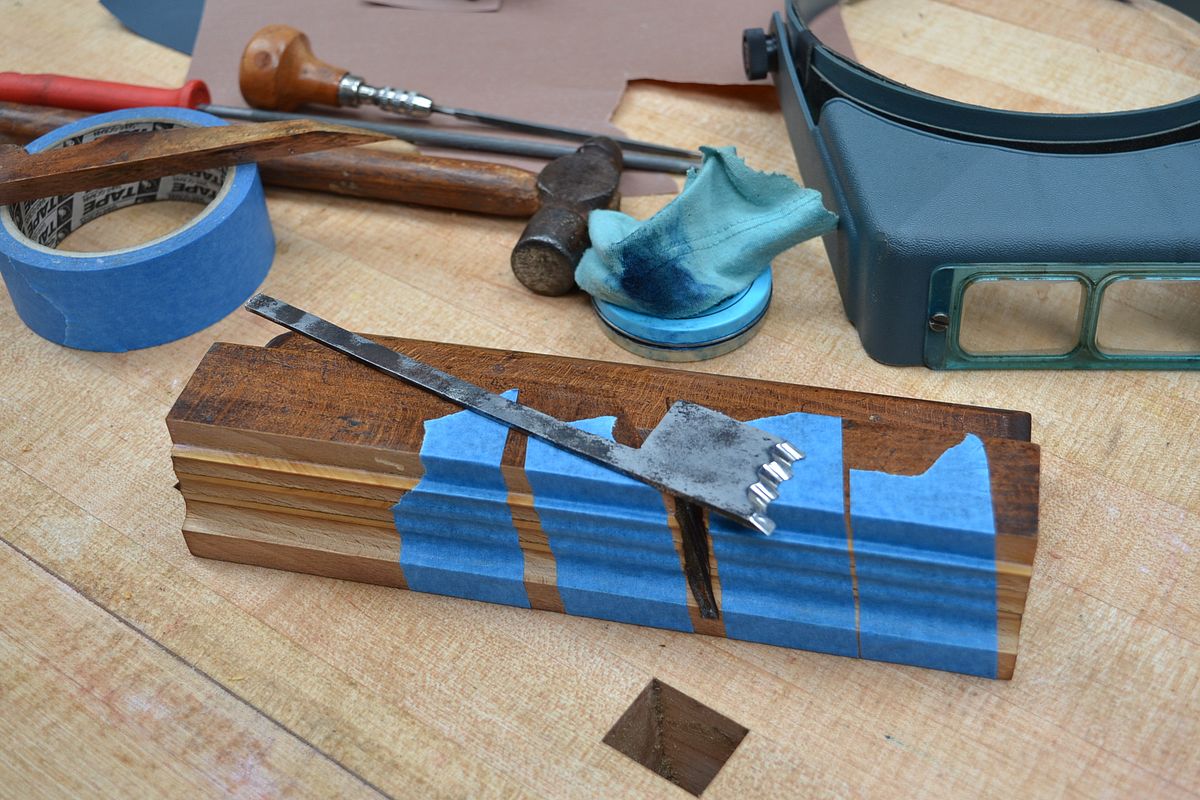
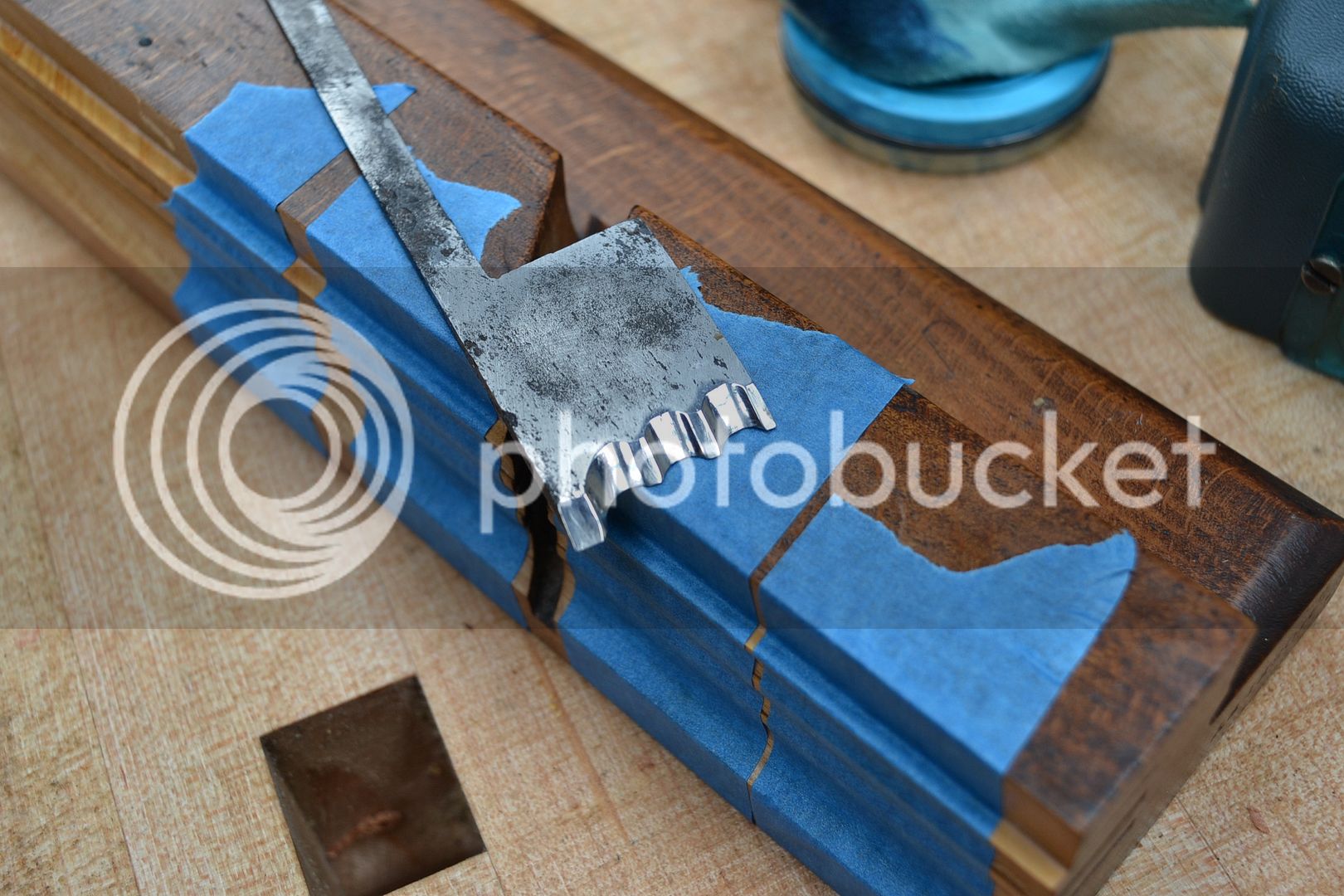
The plane was then tested for performance on some sample boards, and final fine tuning has been completed.
Photos showing the worked profiles will be included in the next post.
Stewie;


swagman
Established Member
Cheshirechappie
Established Member
Looks like a nice finish on the test piece - good work with the reprofiling and sharpening, Stewie!
The wide quirks rather add to my earlier thought that the plane is for architectural work, since they'd be less inclined to clog with paint and become blurred than a narrow, furniture-type quirk would. That profile would make a nice visual edge to a widish board, too.
Good to see a tool doing what it was made for nearly two centuries ago. Thanks for posting, Stewie!
The wide quirks rather add to my earlier thought that the plane is for architectural work, since they'd be less inclined to clog with paint and become blurred than a narrow, furniture-type quirk would. That profile would make a nice visual edge to a widish board, too.
Good to see a tool doing what it was made for nearly two centuries ago. Thanks for posting, Stewie!
Similar threads
- Replies
- 5
- Views
- 360
- Replies
- 11
- Views
- 959




